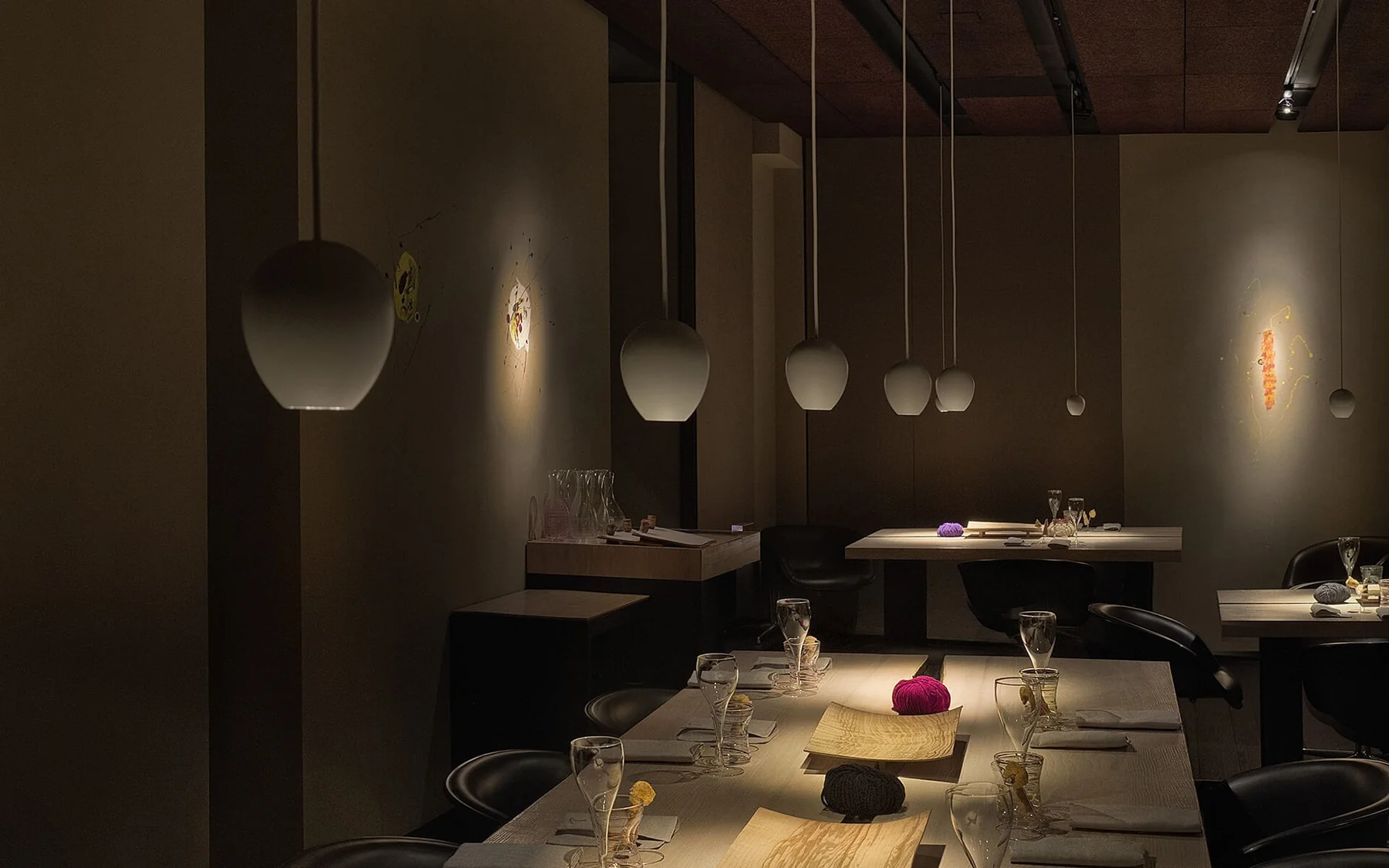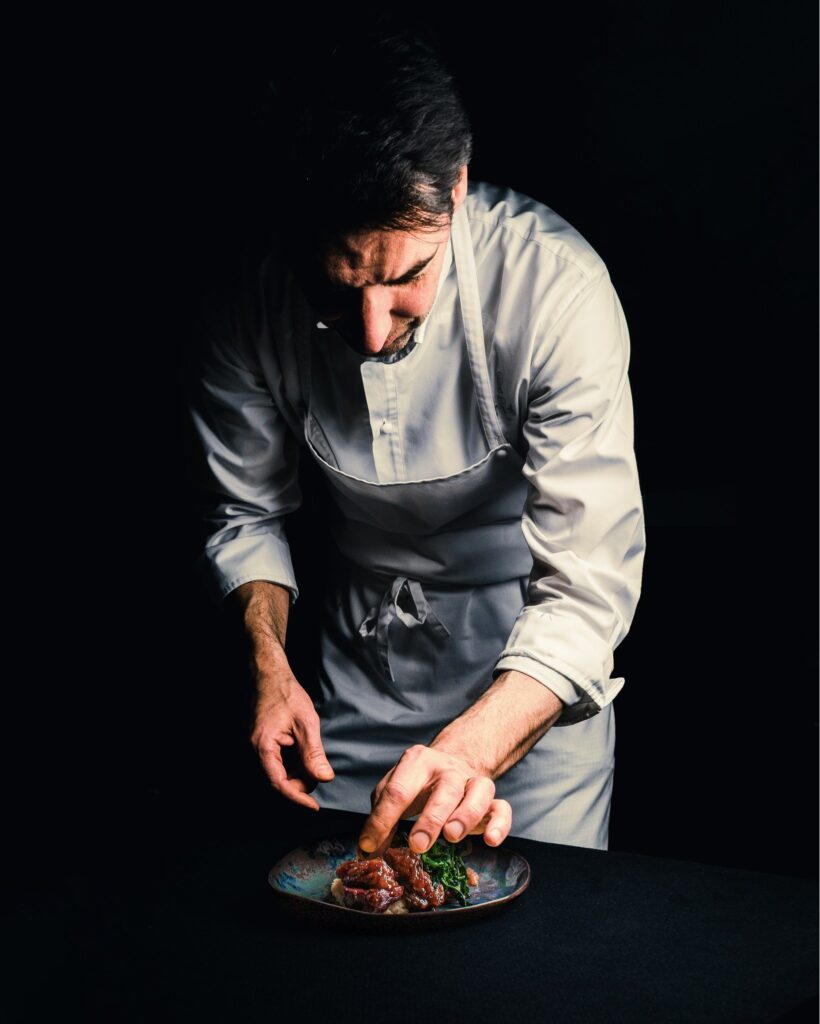
The bone is cut in half vertically and at first glance, one can only imagine it coming from a dinosaur. Yet as guests scrape off the bone marrow with their spoon and taste the dish, they quickly come back to reality. They are at Le Calandre, a three Michelin star restaurant in the North of Italy. All the tasting menus consist of an extraordinary pairing of ingredients, creating an affair which the finicky gourmand is surely seeking to add their gastronomic bucket list. As the restaurant’s chef says: “Like a needle pulling thread through a series of successive holes to create a delicate but sturdy seam, cuisine binds us together without us even realizing it.”

Le Calandre is located in Sarmeola di Rubano, a small town near Padova in Northern Italy. The intimate dining room, conviction in spotlighting detail and ability to tantalize all the senses is why this gastronomic treasure was awarded three Michelin stars in 2003. It is far away from the busy city centre and is located in an area which is by no means touristy. This may be a reason for why it is one of the easier Michelin restaurants to get a reservation for. Either way, it definitely has nothing to do with the lack of quality or creativity of the tasting menus. The team at Le Calandre ensure they mirror the restaurant’s motto: “Take care of each guest as you would for yourself, down to the smallest detail”.
The restaurant was first opened in 1981 by Erminio Alajmo and Rita Chimetto. In 1994 their two sons, Massimiliano and Raffaele, took over and propelled it into the international scene. Massimiliano works the kitchen whilst Raffaele manages the front of house, ensuring that the service is up to par with the cuisine. When the restaurant was awarded three Michelin stars, Massimiliano was only 28. This made him the youngest chef in the world to receive such prestigious recognition. He still holds the title to this day. As the fifth generation of chefs and restaurateurs, it is no wonder Le Calandre has established itself at the top of gastronomic heights.

Massimiliano Alajmo grew up in a perfect storm, one that would inevitably catapult him into becoming a world-renowned chef. His mother, Rita Chimetto, was the fourth generation of chefs and restaurateurs. It was here that Massimiliano dipped his toes in the culinary world. After studying at the School of Hotel Management, he started his career as a chef, first in Italy, then in France. There, he worked alongside two of the most prominent French chefs, Marc Veyrat and Michel Guérard. However, it wasn’t long before home came calling. He returned to Italy to work at his parent’s restaurant, Le Calandre. In 1994, he officially became the Executive Chef. Massimiliano has since shown the culinary world that he is excellent at one thing in particular: his gastronomic technique.
The restaurant’s immediate location is by no means impressive. However, it is located in the province of Padova (also known as Padua), a city that is older than Rome. Padova is featured twice in UNESCO’s World Heritage Site list — one time for its 14th-century frescoes and a second time for the Orto Botanico, which is the oldest botanical garden in the world. As a destination, it is often overlooked as visitors tend to stray towards Venice and Verona, also relatively near to the location. However, it is a quaint city, one with historical features, cobblestone streets and a youthful atmosphere. Whether or not guests include a prolonged itinerary for Padova, the city is highly adaptable to day-trips as well. This gives anyone the perfect opportunity to stop at Le Calandre for a culinary end to the day.

Guests have three tasting menus to choose from. The classic menu features some of their most sought out signature dishes. Then, there is the ‘Max’ and ‘Raf’ menu, named after the two sons. Whatever menu is chosen, one detail remains constant: the thoughtful and well-research approach to blending the senses together for a culinary surprise. Bitter, sweet, savory and aromatic; much thought it done to balance them out in all the portions. Each ingredient is picked with the intention to harmonize together in a single amuse-bouche or dish. Guests have the option to replace a dish with another if they want to try one from another menu.
For example, one signature dish which is constantly requested is their infamous cuttlefish cappuccino. A creamy potato dish with a starchy soup, served with squid in its own ink. There are no rules in what to expect, and if there was one, it would be to remain flexible. From tuna-filled tartlets to vegetable mille-feuilles and a bone-marrow based dish, all the menus give a discreet nod to the roots of the region. The ingredients are simple yet the final product is daring and elevated. It is no surprise that the kitchen acts as culinary laboratory for the chef, constantly operating as a means to experiment.

To accompany Massimiliano’s playful cuisine, the interior decoration plays with the guest’s senses. By creating a multi-sensory atmosphere, the brothers manage to create a well-rounded culinary experience with creativity and design. The tables are made from 300-year-old ash oak trees and each glass is hand blown. Everything was done to highlight Italian craftsmanship, from the ingredients to the artisans who helped to make the interiors. The dimly lit dining area only holds a few tables, enabling everyone to have a more intimate and relaxing time, taking away the hustle and bustle that comes with Italian cities. Whilst it is minimalist with neutral tones, it still manages to make guests feel warm and welcome. Once seated, a ball of yarn on the table — which contains a message for anyone who is interested — is removed, exposing a hollow area in the table which is soon filled with a selection of bread. It is simple and elegant without being extravagant.

With three tasting menus, comes three wine pairing lists. Each wine is chosen to suit every particular dish. To go with the Classic menu for example, a Chardonnay Sauvignon, Sangiovese and Pedro Ximénez to name a few. The wine represents what Le Calandre is trying to achieve: a continuous exploration in what Italy has to offer. In fact, they still explore every wine region, discovering new ones to add to the list. Matteo Bernardi is their sommelier, overseeing and teaching new talents eager to become sommeliers themselves. Wine pairing may not be for everyone therefore, guests can always choose their own. In accordance to their attention to detail and the small things, visitors can peruse their wine selections from a tablet. Whilst this may not seem like a changing factor for the experience, everything is categorized in a number of variables; from the region, to the varietal and flavor palette.

As the competition in the culinary world continues to intensify, chefs and restaurateurs are forced to stand out. Le Calandre has a number of qualities which ensure they remain at the top of their game. From being the youngest chef to earn three Michelin stars, to its multi-generational integrity and focus on gastronomic technique, this restaurant adds the small town of Rubano to the culinary map. Whether guests stick to Venice or Padova, Le Calandre is one stop which should be added to the itinerary.